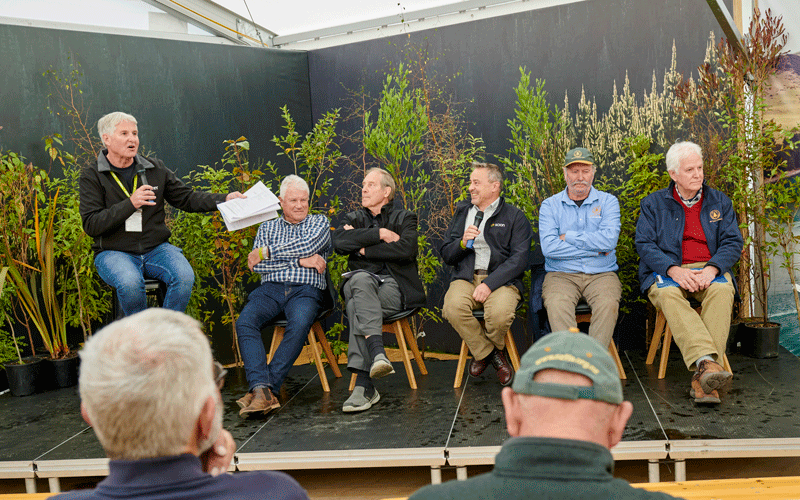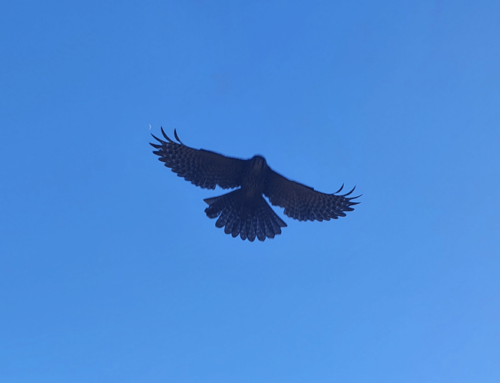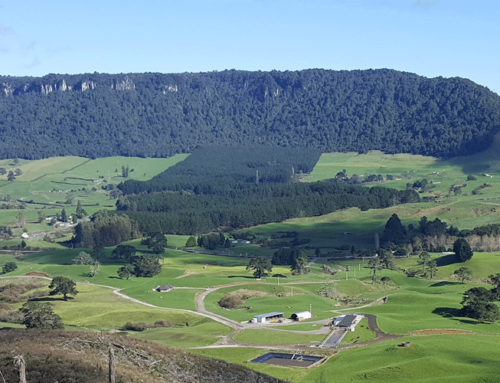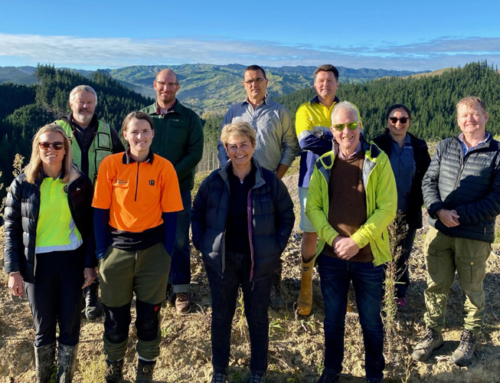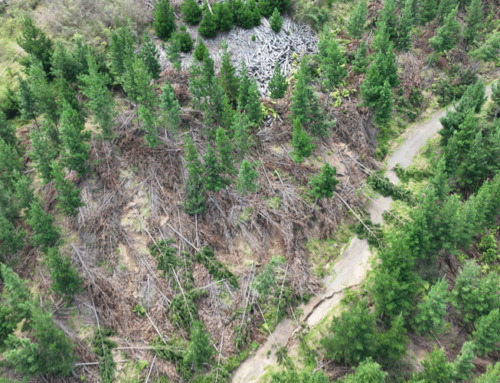At the National Fieldays this year, the Forestry Hub held several light-hearted forums to discuss topical land use issues. One was “Are all trees created equal?”, a panel discussion hosted by Jamie Mackay from The Country.
Graham West, immediate past president of the New Zealand Farm Forestry Association (pictured far right) was asked to speak on radiata pine. He gave this eloquent summary.
“Except for gorse and perhaps possums, few introduced species are more vilified than radiata pine and yet few species have been more tested, researched and widely planted.
The first recorded planting of radiata in New Zealand was in 1859, 164 years ago. It was planted, somewhat ironically, by a sheep farmer at Mt Peel Station, South Canterbury. Most early plantings were on the harsh treeless Canterbury plains, providing shelter for stock and human settlement.
Radiata came from coastal California, so Canterbury is well out of its natural range, and it should have died in the first winter.
Many other imported species were trialled and early on radiata stood out because of fast early growth. It was like an up-and-coming loose forward that bursts from every ruck – it surprised everyone, yet many doubters remained unconvinced.
Twenty years later it was first used for house building, again, ironically, a farmhouse.
In the development of the NZ primary sector there has been few species (of plants or animals) trialled with alternatives, over and over again. The alternatives have inspiring names like the Coast Redwood, Mexican Cypress, Grand Fir, Ponderosa pine, Oregon pine. Radiata was simply known as “pine”. Its early name was Monterey pine, but it was also called pinus insignis. “Insignis” means “distinguished” and “remarkable” and perhaps would have been a more appropriate name.
By the 1950s radiata was reluctantly adopted as the alternative to native timbers for house building and was soon also providing newsprint, packaging, tissue, posts and poles, plywood and particle board. Its early development was helped by being virtually the single focus of an entire research institute, at that time called FRI, now Scion.
Radiata has been extensively trialled and commercially planted in many other countries of the world, particularly in Chile, Australia, Spain, South Africa, Ecuador, Italy and Argentina. The total area of radiata plantations is 4.1 million hectares.
Its strength is that it’s a utility player that can do all things well, often surprising the opposition with speed, adaptability, and easy progress. It is quick to the ball, difficult to move in a ruck, and establishes dominance in the loose play.
Radiata is easy to propagate from seed or cuttings, grows on almost any site below 600m elevation, requires almost no fertiliser, and yet on hill country produces more than twice the dry matter grown by pasture.
Its universal biological productivity is the secret that many pastural farmers haven’t discovered. On top of this it has had 70 years of genetic improvement.
Many people think we are too reliant on one timber species, and yes, logically we should diversify. Forest investors have been looking into that question for at least 30 years, because it has been a continual business risk.
On this issue, I think we got a clear message from the Kiwifruit industry when it was struck with PSA. What saved them was the genetic diversity they had in the many varieties of their main species. One cultivar was found to be almost resistant to PSA and is now their leading money earner – it’s the yellow kiwifruit now called SunGold.
We perhaps should have a dual strategy on this issue, to create species diversity and genetic diversity within species.
New Zealand is very lucky to have radiata pine in its primary industry. Many have looked for alternatives, few have found its equal. This one species earns NZ $6.5 billion a year in export revenue. There is a large and ready market for almost all the tree and that’s why 90% of the time we continue plant, this “remarkable pine”.”



